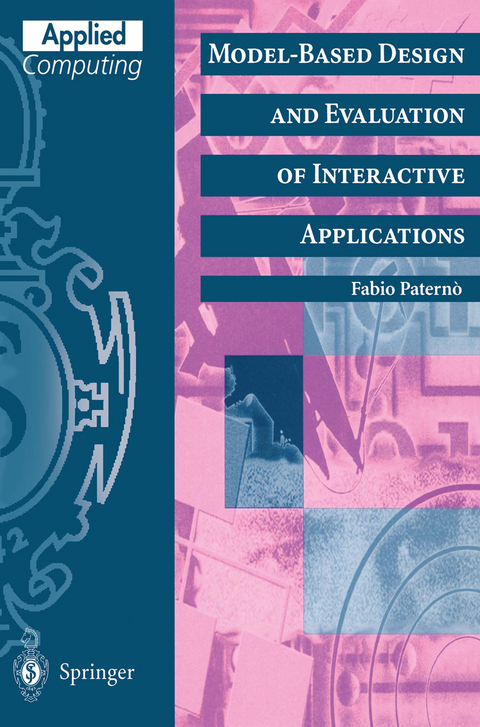
Model-Based Design and Evaluation of Interactive Applications
Springer London Ltd (Verlag)
978-1-85233-155-9 (ISBN)
1 Introduction.- 1.1 Why model-based design and evaluation of interactive applications ?.- 1.2 Basic concepts.- 1.3 Structure of the book and intended audience.- 1.4 Other sources of information.- 2 Model-Based Approaches.- 2.1 Task-oriented approaches.- 2.2 GOMS.- 2.3 Norman’s cycle.- 2.4 Task analysis methods.- 2.5 UAN.- 2.6 Petri Nets.- 2.7 UML.- 2.8 Formal Methods for HCI.- 2.9 Exercises.- 3 Analysis of Interactive Applications.- 3.1 Scenarios.- 3.2 Use Cases.- 3.3 Task analysis.- 3.4 Support for task identification in informal scenarios.- 3.5 Task and errors.- 3.6 Exercises.- 4 The Concurtasktrees Notation.- 4.1 Introduction to ConcurTaskTrees.- 4.2 Task allocation.- 4.3 Temporal relationships.- 4.4 Task types.- 4.5 Additional information associated with tasks.- 4.6 Structuring the task model.- 4.7 Example of ConcurTaskTrees specification.- 4.8 Tool support.- 4.9 Task models for cooperative applications.- 4.10 Exercises.- 5 Task-Based Design.- 5.1 Approaches to task-based design.- 5.2 Aspects to consider when designing user interfaces.- 5.3 Criteria for grouping tasks to be supported by the same presentation.- 5.4 Task-driven design of user interfaces.- 5.5 An example.- 5.6 Tasks for accessing databases.- 5.7 Task-oriented help.- 5.8 Adaptability.- 5.9 Adaptivity.- 5.10 Concluding remarks.- 5.11 Exercises.- 6 Architectural Models of Interactive Applications.- 6.1 Architectures for user interfaces.- 6.2 The interactor model.- 6.3 Composition operators for interactors.- 6.4 From the task model to the user interface architecture model.- 6.5 The transformation algorithm.- 6.6 Connecting interactors to support the information flow.- 6.7 An example of application of the transformation.- 6.8 Exercises.- 7 Patterns in Interactive Applications.- 7.1 Introduction.- 7.2Patterns.- 7.3 How to represent a task pattern.- 7.4 An example of a task pattern.- 7.5 Architectural patterns.- 7.6 An example of an architectural pattern.- 7.7 Relationships between tasks and architectural patterns.- 7.8 Tool support for patterns.- 7.9 Comments on patterns.- 7.10 Exercises.- 8 Usability Evaluation.- 8.1 Criteria for user interface evaluation.- 8.2 Introduction to approaches to usability evaluation.- 8.3 Comparing methods for usability evaluation.- 8.4 Remote usability evaluation.- 8.5 The RemUSINE method.- 8.6 Evaluation of RemUSINE.- 8.7 Exercises.- 9 Conclusions.- 9.1 Summarising the results described.- 9.2 Suggestions for open areas of interests.- References.
| Reihe/Serie | Applied Computing |
|---|---|
| Zusatzinfo | 62 Illustrations, black and white; XII, 196 p. 62 illus. |
| Verlagsort | England |
| Sprache | englisch |
| Maße | 155 x 235 mm |
| Themenwelt | Mathematik / Informatik ► Informatik ► Betriebssysteme / Server |
| Informatik ► Software Entwicklung ► User Interfaces (HCI) | |
| Mathematik / Informatik ► Informatik ► Theorie / Studium | |
| ISBN-10 | 1-85233-155-0 / 1852331550 |
| ISBN-13 | 978-1-85233-155-9 / 9781852331559 |
| Zustand | Neuware |
| Haben Sie eine Frage zum Produkt? |
aus dem Bereich


